#wild herbs
Text

Exotic Deadnettle: Wild Herbs Smoothie (Raw Vegan)
#raw vegan#vegan#breakfast#drinks#smoothies#deadnettle#wild herbs#parsley#spinach#passionfruit#cilantro#chili#avocado#apples#orange#lemon#💚
9 notes
·
View notes
Photo
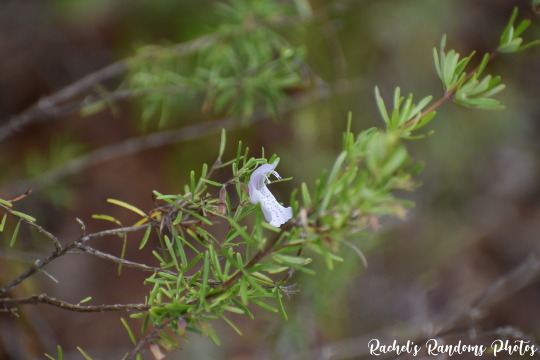
Wild Rosemary (Conradina canescens)
Taken at Malabar Scrub Sanctuary in Malabar, FL
#wild rosemary#rosemary#rosemary flower#wild herb#wild herbs#herb#herbs#plant#plants#plant photography#flower#flowers#flower photography#nature photography#photography#florida#florida photography#florida photographer#malabar scrub sanctuary#scrub sanctuary#sanctuary#wildlife sanctuary#nature trail#nature trails#nikon photography#nikond3500
4 notes
·
View notes
Text

Our website launches August first! Sign up for our newsletter and be the first to know
SpiderRain…..a blog about everything…
….and more
#zen#be free#boho girl#flowers#nature in the city#polinators#bees#lifestyle blog#poetry#art and artists#herbal tea#wild herbs
4 notes
·
View notes
Text
Harvestable Spring Herb no. 2: Purple Dead Nettle (Lamium purpureum)


#p#herbarium#purple dead nettle#purple archangel#Lamium purpureum#mint family#nutritive herbs#herbalism#food centric herbalism#foraging#wild greens#wild foods#wild herbs#wildcrafting#flora#sidewalkchemistry
4 notes
·
View notes
Text
Foraging and Cultivation: How to Eat the Weeds Without Bugging the Bees

All photos in this article are taken by me. You can view my gallery here.
Here's some information for adventurous eaters.
Some people are understandably wary about eating foods that they can't get from a grocery store. Between concerns about animal feces and pesticides to stories about mushroom poisoning and death, we can all agree that it's not wise to just go outside, grab a healthy-looking berry, and shove it down your gullet. There is a right way to forage, and as a foraging veteran, I'm going to take you through some of the most important information you need to start your own foraging journey.
❁❀✿✾
The Universal Edibility Test
The first, and maybe most important, thing I want to talk about is, of course, how to avoid poisoning or death. Even if what you eat is not inherently poisonous, you can also be allergic to things it would never occur to a doctor to test you for. So, let's discuss best practices for gathering wild plants to prevent injury/death. Luckily, those who came before you have developed a great process for not getting killed while foraging.
Note that this is NOT a safe method for testing the edibility of mushrooms, which are much more difficult to identify and require a lot of study and experience. I may write another article regarding mushroom foraging at a later date, but it's very dangerous so for the purposes of this article, we are only going to discuss plants.
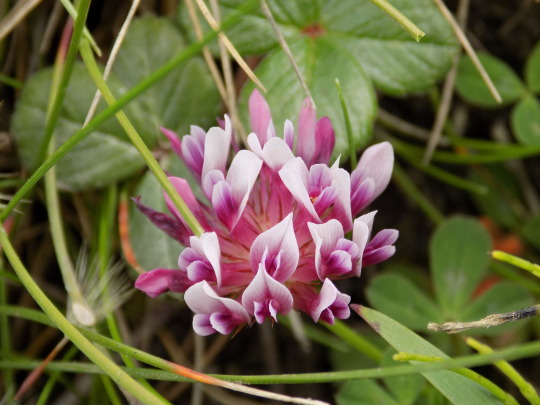
Pink springbank clovers are a tasty and vivid addition to a fresh salad.
"The U.S. Army created the Universal Edibility Test to help soldiers identify poisonous vs. edible plants while out in the field. The test is a standard in the U.S. Army Survival Field Manual ATP 3-50.21, and it appears in the SAS Survival Handbook written by former British Army officer and survival expert John Wisemen."
- From GreenBelly.co
❁❀✿✾
The "Universal Edibility Test" is, as the name suggests, a method for determining the safety of consuming a plant you are unfamiliar with. Here is a very good, simple explanation of the way test works, via Backpacker:
1. Separate the plant into its various parts—roots, stems, leaves, buds, and flowers. Focus on only one piece of the plant at a time.
2. Smell it. A strong, unpleasant odor is a bad sign, as is a musty or rotting odor. Keep a special lookout for pear- or almond-like scents, which can be evidence of cyanide.
3. Test for contact poisoning by placing a piece of the plant on your inner elbow or wrist for 8 hours. If your skin burns, itches, feels numb, or breaks out in a rash, wash off your skin and don’t eat the plant.
4. If the plant passes the skin test, prepare a small portion the way you plan to eat it (boiling is always a good bet).
5. Before taking a bite, touch the plant to your lips to test for burning or itching. If there’s no reaction after 15 minutes, take a small bite, chew it, and hold it in your mouth for 15 minutes. If the plant tastes very bitter or soapy, spit it out and wash out your mouth.
6. If there’s no reaction in your mouth, swallow the bite and wait 8 hours. If there’s no ill effect, you can assume this part of the plant is edible.
7. Repeat the test for other parts of the plant; some plants have both edible and inedible parts. Starting to feel sick? Time to bring it up.
❁❀✿✾
Plant Identification
I would also like to add that if you are unsure of the species of plant you are about to eat, make sure you keep some of it in case you need to have it identified in order to get treatment. Additionally, always have a friend or family member check on you after eating something unfamiliar or questionable so they can call an ambulance or poison control if necessary. Follow the instructions of medical personnel and do not try to induce vomiting or drink water or milk to dilute poison unless advised by a medical professional. Keep updated medical information in your wallet on your person for emergency personnel to reference.

A good identification photo contains as much detail about the plant as possible, including the shape/texture of the leaves, the flowers, stems, and fruit.
Of course, and as the article points out, the single best way to avoid poisoning is to make a positive ID on the plant before consuming it. Plant identification is a challenging skill, but one that is very fun to learn. Some plants look different depending on the season. Some look poisonous, but are perfectly safe. Some may just give you a stomachache or taste awful. Others might look gross, but taste quite good. I'll provide some examples of good eats that are common and easy to identify at the bottom of this article.
How should you go about identifying a plant, though? There are a lot of ways to do it. For my part, I recommend getting a second opinion as often as possible. Take a picture of every part of the plant; the leaves, flowers if there are any, and the roots. Take note of the color of the sap. The more mature a plant is, the easier it is to identify. Share the pictures on a platform such as iNaturalist to get opinions and identification assistance from experts in the field. You can also view thousands of pictures of plants, look up the species commonly found near you, and find out which plants are invasive and which are native to your area. Pl@ntNet is another similar platform. You can also download mobile apps to identify plants on the go. iNat has a particularly good one.
From there, it's pretty easy to Google the name of the plant + edibility. If the answer is 'yes', please make sure you confirm which parts of the plant are edible. It is common for some parts to be edible and for others to be inedible/poisonous, as with some nightshades (where the fruit or root is edible, but the leaves and stems are not; ex: potatoes, tomatoes). The USDA Natural Resources Conservation Service provides this very informative guide. Masterclass also provides a handy checklist for plant identification.
In general, to positively ID a plant with the most possible accuracy, you need to make a note/take a picture of these things:
The location and season in which you found the plant.
Any distinct characteristics on stalks and branches.
The size, shape, and arrangement of the leaves.
The characteristics of any fruits and flowers on the plant.
Any barbs or hairs on the plant, known as trichomes.
The root system, needed to determine if the plant grows from rhizomes, bulbs, or tubers.
Get a second and third opinion whenever possible. With time and practice, you'll start to notice the otherwise subtle differences between many kinds of plants, and you'll learn about some surprising relationships between them.
❁❀✿✾
Ethical Foraging Guidelines
Of course, just because we've found a tasty weed outside doesn't mean we should run out and pick every instance of it we find. There is an ethical--and, importantly, legal--way to forage. If we just go around picking every plant in the hopes of eating it, we're robbing wildlife of their meals. Many pollinating species of bees, beetles, and butterflies rely on specific plants for eating and hosting their eggs, so we need to minimize how much of that we take from them. The USDA NRCS also has a good guide for protecting pollinators when farming and landscaping, but the rules are a bit different when it comes to foraging, since we're going into their habitats and messing with things rather than the other way around.
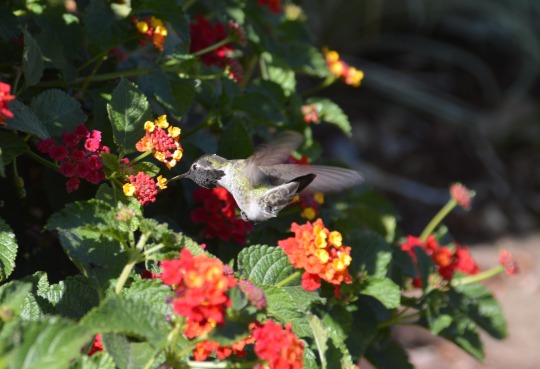
When foraging, it is important to be considerate of pollinators that help the plants we eat grow and propagate.
First and foremost, learn about your local environment. You can learn a lot about your area using this handy tool from the US Environmental Protection Agency.
Next, learn from the experts by asking staff at local regional and state parks about the legality and availability of foraging foods. Many have free educational events and classes that explore the subject and help you broaden your understanding of the environment in general. You can pick up a lot of good local wisdom from these events. If you do not have access to these services, however, you can also do some online classes here, here, and here.
Plan ahead. Chart a course and make sure you have everything you need. I always bring water, a small cooler, a pair of sharp, clean plant shears, a spade, a pocket knife, a small garbage bag for cleaning up litter, and an extra battery for my camera. Dress appropriately for the weather. Make sure your phone is charged and people know where you are and when to worry if they don't hear from you. Carrying bear spray on you doesn't hurt either, although do please remember to consider the direction of the wind so you don't accidentally spray yourself instead.
Do your due diligence in identifying the plant and investigating its status before just picking it. Ideally, you should choose a couple of species you already know to be edible and just pick those while you are out. It is wasteful and damaging to the environment to pick plants you don't recognize, only to find out you've pulled a rare native plant that certain species rely on to survive.
Harvest conservatively. Take only what you are certain you will eat, because every plant you take means many meals fewer will be available for local wildlife.
Leave the place better than you found it. If you notice trash, pick it up and dispose of it in the proper receptacles. Do not litter, do not attempt to alter the landscape (chopping down trees, burning or clearing "undesirable" plants, taking rocks, etc.), do not disturb dens or nests, and don't drive or walk off of the path. Soil compaction is a real thing.
Know the law regarding what is legal to pick and where it is legal to pick from. Some state and regional parks only allow foraging at certain times, and many do not allow it at all.
Devon Young goes into a little more detail on Learning Herbs.
❁❀✿✾
Transplanting Wild Edibles
When it comes to ethical foraging though, perhaps the single most ethical thing you can do is just grow these plants yourself. You can easily order seeds online that you can plant and grow in a pot or in your yard. Some of them are quite beautiful and most are very easy to grow. If you don't want to order them online, consider collecting seeds instead, but please remember to limit what you take so that the plants are able to properly propagate in the wild. You can learn how to harvest seeds from this article by Michigan State University.
I strongly encourage anybody interested in foraging to
It is also possible to transplant weeds. You may find a weed you like on a neighbor's lawn, and with their permission, you can dig it up and plant it in your own yard. Here's a cool video from Youtube that shows you how to do just that.
Avoid doing this with weeds from parks and other wild areas, however, because the further the plants have to travel before they are planted the less likely they are to survive, and that is wasteful. If you bring a pot and some soil, they may travel longer if you replant them right away.
Also, do be aware of the environment you are taking them from, as you obviously do not want to eat any plants that have been serving as a neighborhood dog or cat's latrine. A good place to take them from is your own backyard, provided you follow the above guidelines. Gathering and growing seeds wild circumvent this issue.
Always wash plants thoroughly before consumption. That will also help you avoid accidentally consuming any bugs.
❁❀✿✾
And that's it! That's how you can forage and eat adventurously without making a mess and disrupting your environment.
If you're from the east bay area/northern California, I can share some of my favorite weeds to eat.



Broadleaved Pepperweed
Bull Thistle
Cobwebby Thistle
Common Chickweed
Creeping Woodsorrel (limit due to oxalic acids)
Crane's Bill/Wild Geraniums
Fireweed
Hairy/Purple Vetch
Miner's Lettuce
Wild Mustard
Wild Radish
You can even find some recipes here.
Enjoy responsibly. ❁❀✿✾
#foraging#plants#weeds#garden#gardening#herbs#wild herbs#northern california#north america#plant identification#eat the weeds#pollinators#honeybees#bees#bumblebees#environmentalism#transplanting#free resources#nature photography#my photography#my articles#backpacking#camping#foraging guide#ethical foraging#wild edible plants#flowers#my writing#written by me
7 notes
·
View notes
Text
A little about St.John's Wort
Here's a little about ST. John's Wort to get you in tune with this Summer herb.
St. John’s Wort is flowering like crazy in the Adelaide Hills at the moment. The other day, I went harvesting in the heat and I thought I’d write a little about it for you.
St. John’s Wort ( Hypericum perforatum )
I’ve used Hypericum perforatum for a few years now for things related to our nerves. The petals with their jagged edges, looking almost frayed and those stamen pointing all over the…

View On WordPress
0 notes
Text

#organic farming#organic honey#биологична пелна ферма Попови#Биологичен мед#Пчелен мед#bee#farm#Popovi#family farm#organic#ecological#honey#acacia#wild herbs#lavender#linden#manov honey#пчелен мед#Пчелен прашец#прополис#мед#био мед#мед био#bee farm#Bulgaria#Kalofer#Plovdiv#eco#bio#art
0 notes
Text



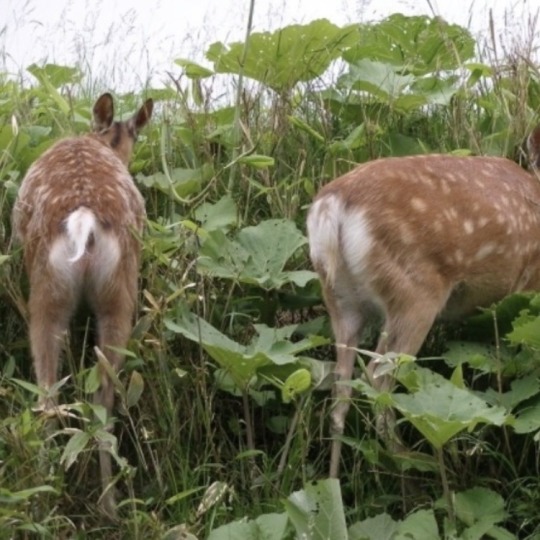
#mushrooms bunnies and fawns! *heart eyes*#cottagecore#nature#naturecore#mushrooms#bunnies#bunny#deer#fawn#animals#wild animals#forest#forestcore#herbs#cute#cottage aesthetic#grandmacore
2K notes
·
View notes
Text

little Stjerne ✨🌿
#original character#stjerne#stjerne mossvik#dnd#firbolg#he probably wanted to help collecting herbs for mielikki's temple#but he ended up with a basket of weeds some wild strawberry flowers and maybe nettle#and his mother was “you're doing great sweetie”#and she smiled and gave him a kiss on his forehead
519 notes
·
View notes
Photo

Wild Garlic (Allium Ursinum)
#photographers on tumblr#nature#flowers#spring#white#floral#flores#primavera#blanco#herbs#wild garlic#allium ursinum#garden#gardening#original photographers#vertical#original photography
188 notes
·
View notes
Photo

"Not so bad am I, lovely girl?"
me: i should work on portfolio pieces
also me: OKAY BUUUUT HTTYD3 EXPLORERS AU !
explorer’s au tag is here
#httyd#hiccup haddock#light fury#httyd3 au#explorers au#how to train your dragon#how to train your dragon 3#hidden world#au#its fun balancing her wildness with hiccup's idea of training lmao#she never wears a saddle or carries people but she carries herbs and salves#she also super untrusting and wary of others where as toothless kinda just sticks his nose in everyone's business
352 notes
·
View notes
Text

Vegan Quiche Tarts with Wild Garlic (Gluten-Free)
#vegan#gluten free#brunch#tart#quiche#wild garlic#wild food#tofu#green onion#mint#basil#capers#lemon#nutritional yeast#herbes de provence#chickpea flour#tomatoes#pine nuts#nutmeg#coconut oil#black pepper#sea salt
30 notes
·
View notes
Text


relationship goals (implying both pairs)
#despicable me#despicable me 2#despicable me fanart#felonious gru#lucy wilde#minions#minions fanart#scarlet overkill#herb overkill#illumination#illumination entertainment#illumination fanart#grucy
139 notes
·
View notes
Text

Sign up for our newsletter to be the first to see new blog posts! www.spiderrain.com
#zen#be free#nature in the city#poetry#art and artists#small business#animal rescue#pollinators#herbal tea#wild herbs
1 note
·
View note
Text
How to Identify Red Deadnettle
Originally posted on my website at https://rebeccalexa.com/how-to-identify-red-deadnettle/
Name: Red Deadnettle (Lamium purpureum)
Range and typical habitat(s): Native to large areas of Europe and Asia. Introduced invasive in United States, New Zealand, and scattered areas of South America

Distinguishing physical characteristics (size, colors, overall shapes, detail shapes): Keep your eyes on lawns, gardens, roadsides, and other sunny areas this spring, and you may very well see the green and purple foliage of red deadnettle.
These heart-shaped leaves with softly serrated edges are covered in fine hairs. Leaves near the top of the slender, square-shaped stem are more of a reddish purple hue, while lower, larger leaves are a medium green. The leaves rarely exceed an inch and a half in length, and are attached to the stem with a slender stalk. Each leaf has palmate veins–several primary veins all starting near the stem–branching off multiple times into a reticulated network of smaller veins.

At the top of the stem, which may be almost a foot long in extraordinary specimens, you may find tiny pinkish purple trumpet-shaped flowers. A close look reveals one large petal at the top, two smaller ones at the bottom, and sometimes a few tiny ones in the space in between. While flowers are easily in evidence this time of year, red deadnettle may flower in other seasons if conditions are favorable. As it is an annual, it will die back in fall, but new generations are quick to germinate before winter sets in. For those wishing to remove it from their gardens, the shallow root systems mean that it is easy to pull up, especially in wet soil.
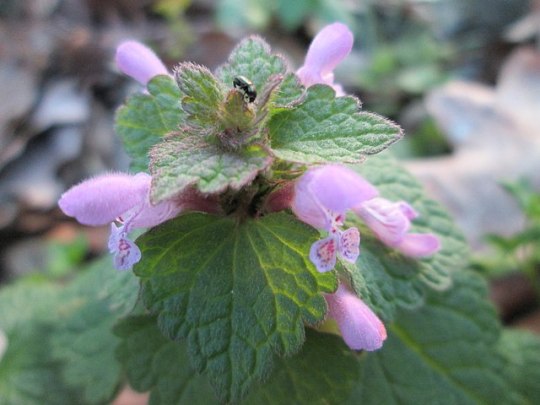
Red deadnettle is a member of the mint family (Lamiaceae). While it resembles a very tiny stinging nettle (Urtica spp.), its tiny hairs do not cause irritation, hence being described as “dead”. Other common names for this plant include purple deadnettle and purple archangel.
Other organisms it could be confused with and how to tell the difference: Purple henbit (Lamium amplexicale) is the most common lookalike for red deadnettle. They inhabit the same habitat types and are of similar size and colors. Upon closer inspection, the leaves are a good way to tell the difference. Henbit leaves are more rounded in shape with a scalloped, rather than serrated, edge. In fact, they almost give the impression of one large round leaf surrounding the square stem, especially near the top. The upper leaves have no stalks, while lower leaves have short stalks. While henbit has similar flowers, they are longer than those of deadnettle.

Note how henbit’s leaves and flowers are shaped and arranged differently than deadnettle’s.
Ground ivy (Glechoma hederacea) is similar to purple henbit, but the rounded, scalloped leaves are often a darker green on a green to dark red stem. Also, all the leaves have a small stem. It is easily differentiated from deadnettle by its flowers, which although being of a similar shaped are blue to purple in color. Ground ivy is also more shade-tolerant than deadnettle. As with the others, it is a European plant that has become invasive in North America.
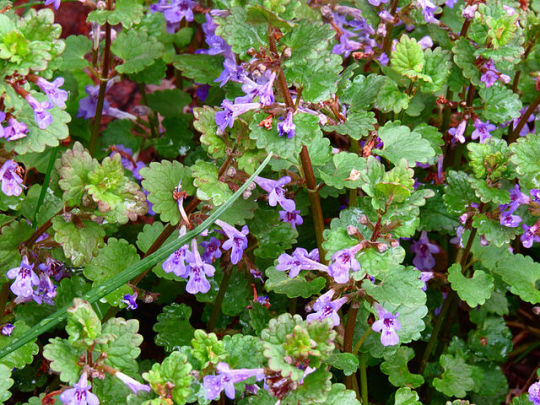
Yellow archangel (Lamium galeobdolon) is yet another European wildflower that has taken root in North America and New Zealand, and to a lesser degree in South America. Its size is the most obvious way to differentiate it from red deadnettle and the rest; it grows on a single stalk that may be over thirty inches tall. The serrated, oval leaves and the yellow flowers are also larger than those of deadnettle, and there is no reddish tint to the foliage.
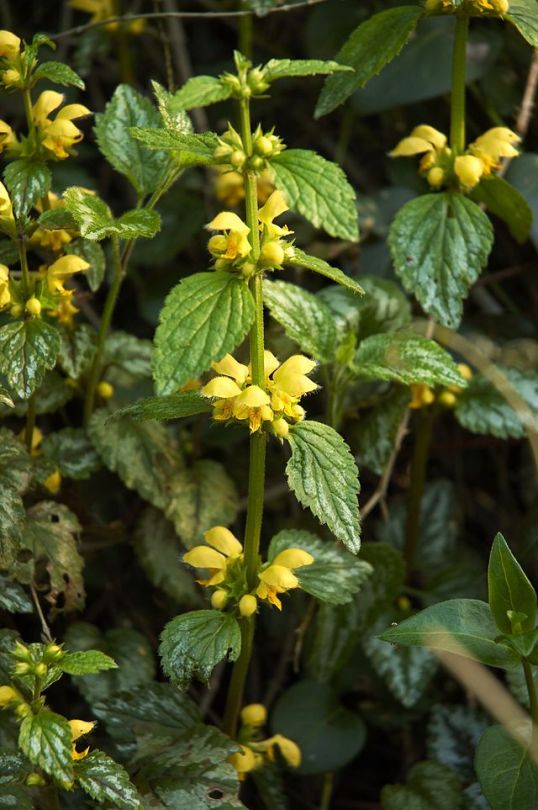
The stinging nettles (Urtica spp.) can similarly be differentiated from red dead nettle by size. Particularly tall specimens may reach seven feet high, and the green, heart-shaped leaves can be up to six inches long. The leave margins are more sharply serrated and the end is pointier. And, as the name suggests, the leaves and stems have hairs that inject irritating chemicals into the skin.
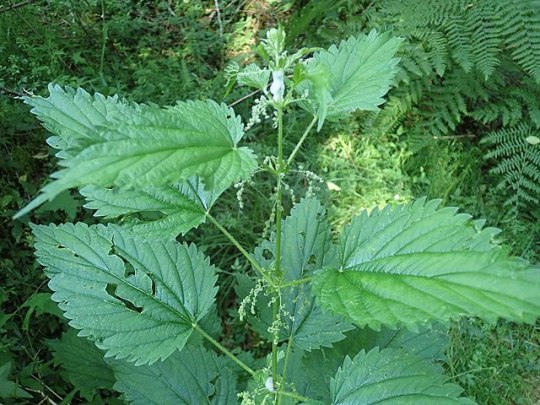
Anything else worth mentioning? Red deadnettle is a beginner-friendly edible plant for foraging. Henbit is the plant it’s most likely to be confused with, and it is also edible. People most commonly eat the young leaves and flowers at the top of the plant; they may be eaten raw or cooked. Because it is an invasive species, you are encouraged to pick the whole plant before it goes to seed, eat what you want of it, and compost the rest.
Further Reading:
Red Dead-Nettle
Lawn and Turfgrass Weeds: Dead Nettle
Dead Nettle, Henbit, and Ground Ivy – Three Look-Alike Weeds
Dead Nettle, an Overlooked yet Valuable Wild Edible
Did you enjoy this post? Consider taking one of my online foraging and natural history classes or hiring me for a guided nature tour, checking out my other articles, or picking up a paperback or ebook I’ve written! You can even buy me a coffee here!
#red deadnettle#red dead nettle#mint family#edible wild plants#edible plants#foraging#herbs#herbalism#nettles#botany#plants#wild foods#weeds#invasive species#red henbit#yellow archangel#ground ivy#stinging nettle
87 notes
·
View notes
Text




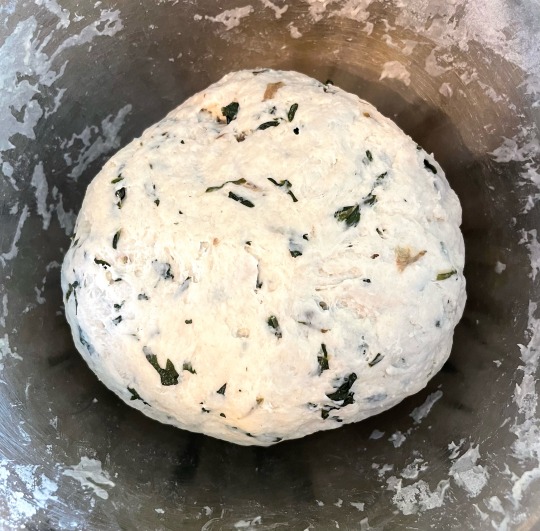
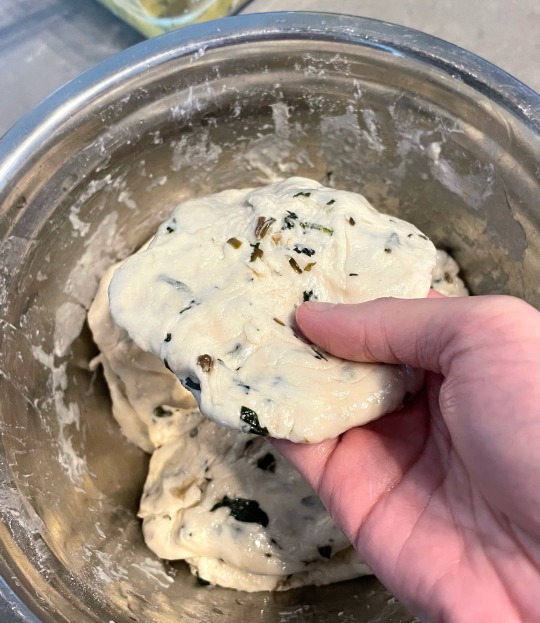


Dandelion Pulled Noodles.
It just needs flour, salt, water, oil, and PATIENCE to make.
Dandelions are naturally bitter regardless of when and where you pick them. To rid the bitterness, you need to blanch them in boiling water for 5 minutes, then soak them in cold water for at least 6 hours; change the water 1-2 times in between. Then finely chop the dandelions.
Once the green is ready, making the noodles is pretty straightforward.
1. In a mixing bowl, combined 2 cups flour, 1 tablespoon salt, chopped dandelion. Then slowly add water and form the mixture into a slightly stiff dough (the dough won’t be smooth, so no worries). Cover the bowl with damp cloth and leave it for 1 hour.
2. Drizzle 1/4 cup vegetable oil over the dough. Divide the dough into smaller portions (about the size of a tennis ball), and flatten them. Make sure both sides of each cover with oil to seal the moisture. Cover the bowl and leave it for 2 hours.
3. To cook, boil a pot of water over high heat. When it’s boiling, pull the dough into bite size and add it to the water. Cook until they float to the top. Serve the noodles with your favourite soup base.
I hope you enjoy this spring recipe.
#dandelions#dandelion greens#spring plants#wild edibles#wild food#healthy#wild plants#handmade#noodles#digestivehealth#forager#foraged food#foraging#kitchen witch#witchy#green witch#herbs#recipes
14 notes
·
View notes